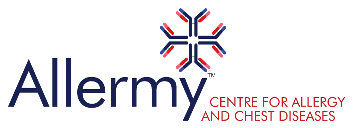There is an increasing prevalence of children in age 1 year to 11 years presenting with mouth breathing , snoring and difficult breathing.
Percentage of cases based on symptoms of adenoid Hypertrophy

M Arif Ahmed Annals of Allergy and Asthma november 2016.
This is having an impact on the growth of the child, his behavior and concentration. As a consequence it affects his quality of life. The commonest cause of this is due to adenoid enlargement.
The adenoids are located in nasopharynx which is an area just above the soft palate. It can be seen neither from the mouth nor from the nose directly. We simply do an x-ray to see for any enlargement. The location of the adenoids in a limited space along with edema or swelling in response to an insult leads to matching greater airway obstruction.
The insult could be mostly due to infection or allergen. Children do suffer from repeated viral and bacterial infection which would lead to enlargement of the adenoids. As age advances and the infections abate, the adenoids would gradually shrink.
However allergens too have a higher action in the adenoids due to the anatomical proximity to the nose and the sharing of the same lymphatic drainage.
In various study models it has been shown that there is a definite pathological and physiological relationship between adenoids enlargement and allergy. Both infection and allergies contribute to adenoid enlargement and also inflammation. As a result this also worsen middle ear disease causing otitis media with effusion.
The adenoids are likely to be sensitive to the house dust mite(HDM) especially if the patient is having concurrent allergic rhinitis or inflammation of the nose. It has been shown that allergy control in these patients brings about a reduction in the incidence of adenoid surgery.
Various studies across the globe have shown that children with family history of allergy and clinical allergy have early onset of symptoms in presence of adenoid enlargement.There have been a higher incidence of positive allergic testing in children with mouth breathing. House dust mite was the most common allergen identified in children with adenoid enlargement. Children having moderate to severe rhinitis almost 50% of them were not satisfied with the treatment.
In our study “Evaluation of dust mite allergy in children with adenoid Hypertrophy” presented at ACAAI in San Francisco and published in annals of allergy nov 2016 we made the following observation.
Sensitivity to dust mites is a risk factor for adenoid enlargement. If there is a family history of allergy and presence of clinical allergy and a male child there would be higher incidence of HDM allergy. Also there is direct correlation between dust mite allergy and size of adenoid enlargement. As the enlargement increased from mild to moderate to severe, there was a corresponding increase in the incidence of HDM positivity.
Hence the recommendation was that there should be a complete ENT as well as allergy assessment of children with adenoid enlargement. They should be evaluated comprehensively since there is a definite treatment which would lead to reduction in morbidity and much suffering. The main stay of this treatment besides allergen avoidance is intranasal steroid spray for at least 6 week . This would leave to reduction in the size of the adenoids thus saving the patient from surgery. It is referred to as medical adenoidectomy.
–

